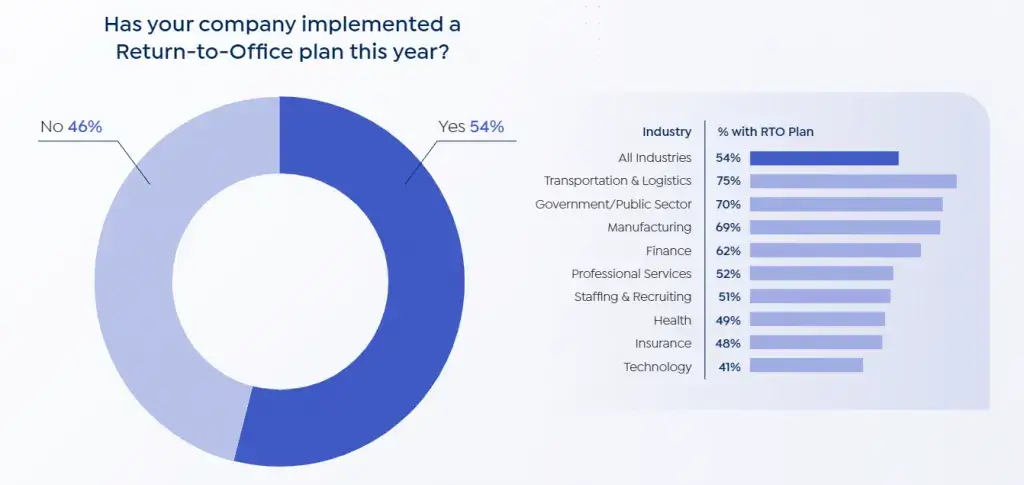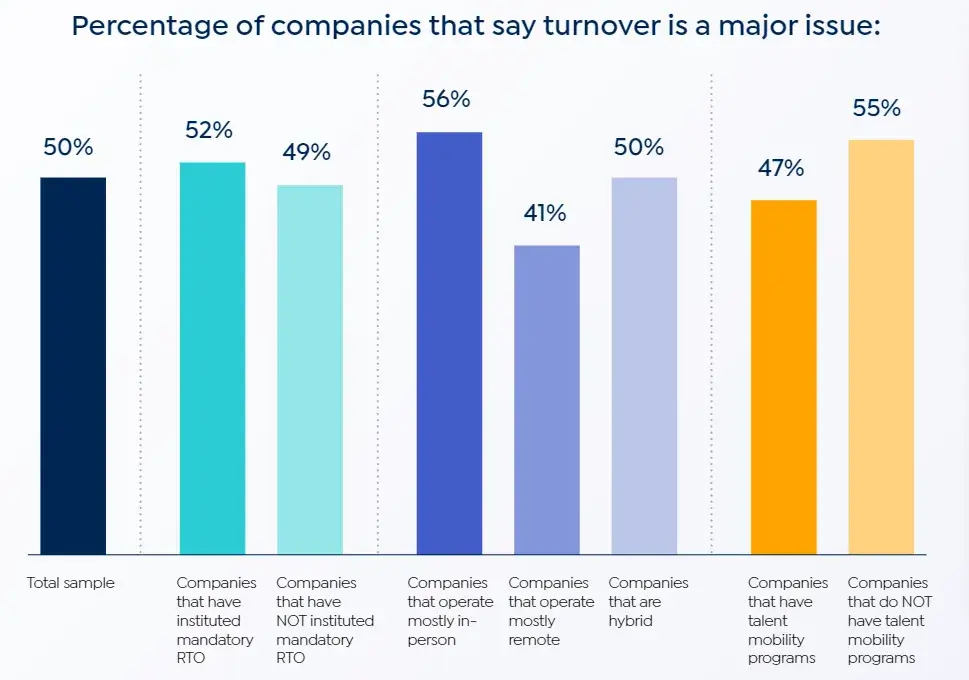As the threat of pandemic wanes and COVID-19 becomes fully integrated into our new normal, many organizations are eager to make use of their office spaces again and have started putting together their return-to-office plans.
Getting back into the office has its benefits: it fosters a stronger sense of community, improves collaboration, and in-person working arrangements can foster stronger interpersonal relationships, driving up employee engagement. Plus, you’re paying rent on your office space no matter how many people are in it each day.
However, getting employees back into the office isn’t without its issues: many employees prefer working remotely, and to take that away may prompt even higher turnover for a business. Many businesses are implementing mandatory Return-to-Office (RTO) policies anyways, despite the fact that many employees have grown to love the flexibility remote work offers them.
We wanted to better understand how hiring professionals were approaching Return-to-Office, so in our 2022 Hiring Benchmark Report, we asked our respondents about their RTO plans for this year.

A little more than half of respondents confirmed that they had implemented an RTO plan in 2022, while 46% had not. There was a clear connection between the likelihood of an organization returning to the office and the industry they were in. Organizations in Transportation & Logistics were the most likely to have an RTO plan, with 75% reporting that they had one in place. The Government and Public Sector took runner-up, with 70% working to get their employees back onsite. Technology (41%) and Insurance (48%) companies were the least likely to have put an RTO plan in place. This is unsurprising. Since many roles in these industries really only hinge on a strong Wi-Fi connection, there isn’t much reason to pull everyone out of their home office.
What was interesting was the connection we found between turnover and RTO plans. Our survey data shows that 52% of companies with a mandatory Return-to-Office plan report that turnover is a major problem for their organization. Compare this to just 49% of those who haven’t got a plan in place. Diving deeper, we found that when a company is mostly remote (and therefore less likely to have a mandatory RTO plan), they were the least likely to report turnover as a major issue for their organization when compared to mostly in-person and hybrid organizations.

The key takeaway here is to evaluate whether the benefits of returning to the office outweigh the risk of potentially frustrating your current employees who have been enjoying the work-life balance that remote work affords them. Additionally, this data supports the idea that companies do have a tangible way to improve their turnover rates. While not every job in every industry can be done remotely, many jobs have parts that can be done from anywhere. Even allowing just a few remote working days a week can help reduce turnover.
To learn more about this year's workplace trends, grab your copy of the 2022 Hiring Benchmark Report today!





